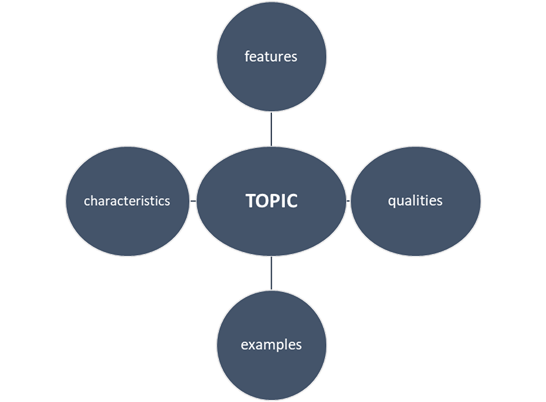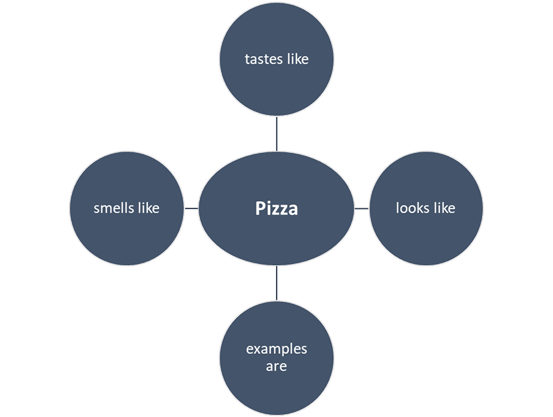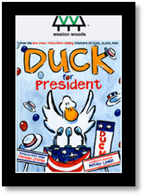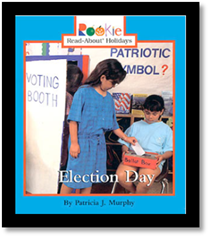Descriptive Text
Structure
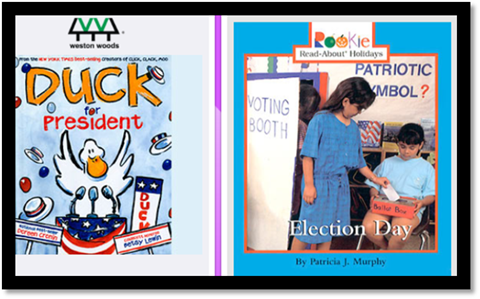
Figure 1 BookFlix
Unit Overview
This unit focuses on Descriptive Text Structure; Present, Past, and
Future Tense Verbs; and Descriptive Writing. You will be able to accomplish the following objectives
by the end of this unit:
1.
I can use spelling patterns and rules to help me spell new
words. L.3.2.F
2.
I can ask and answer questions to show that I understand the
information that I am reading. RI.3.1
3.
I can find the answers to specific questions within
informational text that I read. RI.3.1
4.
I can show what I have learned from informational text and
illustrations by answering questions about where, when, why, and how. RI.3.7
5.
I can read and understand 3rd grade informational texts by
myself. RI.3.10
6.
I can write to inform and explain ideas to others clearly.W.3.2
7.
I can write an informative [descriptive] text that introduces my
topic and then groups related information together. W.3.2.A
8.
I can write about a topic using facts, definitions, and details.
W.3.2.B
9.
I can use linking words (also, another, and, more, but, etc.) to
connect the ideas in my writing. W.3.2.C
10.
I can write conclusions (endings) to my informative pieces of
writing. W.3.2.D
11.
I can include illustrations in my writing to help others
understand my topic better. W.3.2.A
12.
I can write for short time frames or over a longer period of
time depending on my purpose, audience, and topic. W.3.10
13.
I can correctly say, write, and use different verb tenses (e.g.,
I walked; I walk; I will walk). L.3.1.E
Spelling List
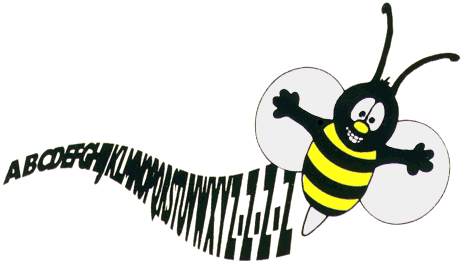
|
awful |
straw |
along |
|
called |
drawing |
bought |
|
falling |
strongest |
brought |
|
mall |
longer |
rough |
|
small |
song |
tough |
Let's Practice
Click on Spelling Training to practice your spelling words. Add
each of your spelling words to the list.
Then, complete one of the activities below the list.
Vocabulary
List
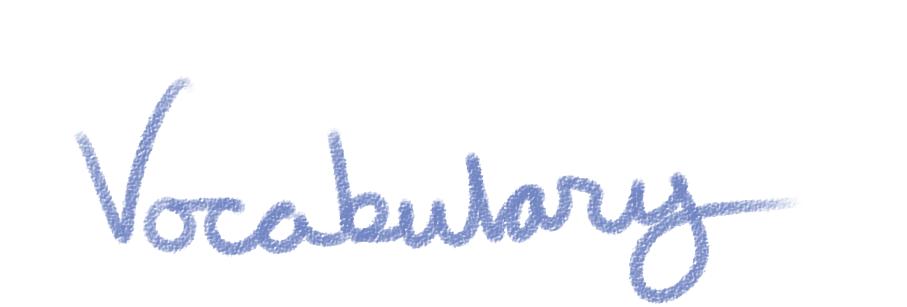
|
barn |
A
building on a farm where the animals live |
|
box |
A place where you can
store things, usually shaped like a cube |
|
chores |
Jobs
that people do, usually around the house |
|
farmer |
A person who lives and
works on a farm |
|
feathers |
The
covering on most birds |
|
furious |
Very angry |
|
sign |
A kind
of poster that tells you something |
|
work |
To do a job of some kind |
Above is your list of vocabulary words with their
definitions. Be sure to study and
practice these words daily before you begin your reading lessons.
Let's
Practice
Below is a Quizlet activity on your vocabulary
words for the unit. You should practice
the Flashcard and Learn activities each day during the week of this unit.
Descriptive Text
In a text with a descriptive structure,
authors use sensory and descriptive details to help reader’s visual
information. It shares the who, what,
where, when, why, and how of a topic. Watch
the example below in the video.
|
Descriptive
|
|
A topic,
idea, person, place, or thing is described by listing its features,
characteristics, or examples. |
|
signaling words: for
example, for instance, such as, that is, in describing, which was, examples
are |
|
|
Show,
Don’t Tell
Strong writers show rather than tell
when writing. Descriptive
words can be used to make your writing more detailed and interesting. A describing word helps you imagine how
something looks, feels, smells, sounds, or tastes. It can explain more about a subject or a
verb. Below are some examples of how you
can make your writing more detailed and interesting by adding descriptive
words.
·
The snow cone sat in the sun. à The melting snow cone sat
in the bright sun.
·
Many children ran toward the ocean waves. à Many excited children ran toward the crashing ocean waves.
·
My friends built a sandcastle. à My new friends built a large sandcastle.
Read the chart below
to learn how to "show" different character emotions!
|
Nervous
His teeth chattered. One could see her fingers
trembling. Her voice quivered. |
Joyous
His smile was as wide as Ohio. She could not stop grinning. The child jumped up and down. |
|
Confused
He raised one eyebrow. His forehead wrinkled as he
stared. She stood quiet for a moment. |
Angry
She folded her arms. She held her lips tightly. He stormed out of the room. |
|
Surprised
He gasped. She screamed as the door
opened. She jerked her hand backward. |
Embarrassed
She covered her head with a
jacket. He walked in a different
direction. His faced turned red. |
Let's Practice
IXL Skill Check – Click Add descriptive details to sentences to complete the skill.
IXL Skill Check – Click Show character emotions and traits to sentences to complete the skill.
Reading Log & Journal
Writing journals can be
compelling to you as a student. It helps you respond to your
Read-Aloud and Oral Readings to gain further understanding. You must
write at least one journal per unit in this course based on one of your
readings. Click on the Unit Resource icon to
the left of your screen to download the Reading Log & Journal template. Also,
you have an option to create your journal book for this course.
Reading
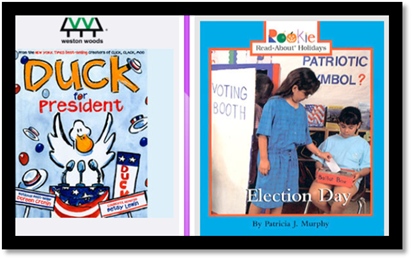
The above two stories will be used for your
Read Aloud and Oral Reading activities.
Read-Aloud
Your read-aloud is a fiction story called "Duck
for President." Fiction tells about things
that are imaginary, or make-believe, while nonfiction tells about things that
happen in real life.
Duck was tired of his chores on Farmer Brown's
farm. Duck didn't like to take out the trash, mow the lawn, and grind the
coffee beans. So, he organized an election to pick someone kinder as head of
the farm. Has this ever happened to you? What did you do?
Before
reading/watching the video, let’s makes some connections by thinking about the
following questions:
·
Think about a time when you had a lot to do and were very busy.
How did you handle all of the work?
·
What would you do if you wanted to get out of doing work?
When
you read fiction (stories that are not real), it is helpful to think about the
sequence of events, the most important characters, and the settings in the
story. When you retell and summarize, it is important to describe what happened
first, next, then, and last. It is also important to tell who did what and
where each event took place.
Click the image below to begin your read-aloud
activity.
Did you hear the new vocabulary words? Did it
help you to know what those words meant before you watched the video?
Think
about the characters, events, and the settings in Duck for President. How does
paying attention to the story elements help you to be a better reader?
Let's Practice
Oral Reading
Your oral reading is a nonfiction text called
"Election Day." This
text introduces readers to the process of voting on election day. You will be
reading (or listening to) a nonfiction book about elections. A nonfiction book
contains true facts about a subject. While you read this story, pick out the
facts about voting and elections.
Click the image below to begin your oral
reading activity.
What
facts about voting and elections did you learn while reading?
Let's Practice
Verb Tenses
Verb tenses tell us when an action is taking
place. There are three main verb tenses.
|
Present |
Past |
Future |
|
The present tense of a verb tells that
something is happening now. |
The past tense of a verb tells that
something already happened. |
The future tense of a verb tells that
something will happen later. |
|
The apple
tastes good. |
I ate
the apple. |
I will
eat that apple soon. |
|
I draw
pictures at school. |
I drew
a picture at school. |
I will
draw a picture for you. |
|
I jump
in gym class. |
I jumped
over the box in gym class. |
I will
jump over the hurdles in gym class. |
Let's Practice
IXL Skill Check – Click Is the sentence in the past, present,
or future tense? to complete the skill.
Informative
Writing
Below is your video and activity from the Informational
Writing for Kids series provided by Teaching Without Frills.
Now that you have a topic, you should be ready
to make a plan!
In Episode 3, you will think about the
structure of your book and the subtopics that you will include.
Click here to complete an activity based on the video above.
Descriptive Text Writing
Informational text is a type of
nonfiction that tells about a topic using facts. It has a topic sentence and supporting
details. The author’s purpose is to
inform the reader about that topic. In
this unit, we explored an informational text structure called Descriptive
(Description). A description structure
tells us about something.
Let's Practice
Please read and listen to the descriptive writing
sample titled “My Favorite Place to Go”.
This writing sample is based on an essay
submitted by fourth-grader Mia. She uses some vivid verbs and sensory details
in her writing.
As your read and
listen, identify the following items:
· Beginning – Middle - Ending
· Topic - Details
· Descriptive words
· Sensory details
|
“My Favorite Place to Go” Do you have a favorite place to go—a place
with family, good weather, and fun things to do like crabbing? I’m glad I do.
New Jersey is my favorite place for many reasons. The first reason is my family. Over half
of my family lives in New Jersey. When I visit, my cousins and I laugh and play
all day and night. My uncles and aunts take me to the boardwalk where we ride
roller coasters. We devour juicy caramel-covered apples and foot-long hot
dogs. My family is fun to be with. The second reason for New Jersey being
my favorite place is the weather. Instead of being hot and sweaty, it’s
always cool and moist. When I think about my visits, I can just feel the
crisp fall breeze in my hair. I can just see the white, fluffy winter snow. I
can just hear the soft spring trickles of rain splashing on the sidewalks. I
can just feel the warm summer sun on my face. The weather is great! The third reason for New Jersey being my
favorite place is crabbing. If it’s crab season, we crab. We keep the blue
crabs and the snow crabs, and we let the others go. Sometimes we catch crabs
on hooks, and sometimes we lower crab cages into the bay. Then we pull them
out later. One time my brother caught a crab so big that it got stuck in the
crab cage! The crab finally got out, but it hurt one of its legs and broke
the cage trying. Poor crab! For all these reasons, New Jersey is my
favorite place to go. If you don’t have a favorite place, I think you should
search for one. It’s good to visit a favorite place—a place where you can
make special memories. By the way, if you crab at your special place, be sure
to get a big crab cage. |
Click here for a printed version.
Cursive Handwriting
Who Am I?
I wear pretty pink feathers, like a gown.
My stance is ALWAYS one leg up and one leg down.
My skinny limbs are tired and cry, “It isn’t fair.”
“I need a chair.”
Who is it? Scroll…
On…
Down…
With…
Care…
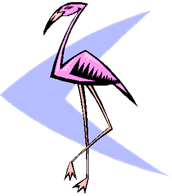

The
word flamingo starts with the cursive lowercase letter that
begins with an undercurve stroke. Look at how the cursive lowercase letter is
formed.
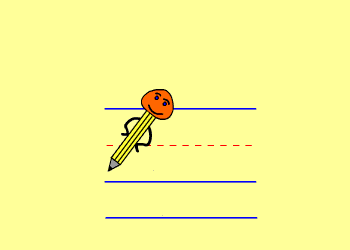
Now, you are going to practice writing the cursive
letter “f” and join it to other letters.
Click on the Unit Resource icon to the left of your screen to practice
the Cursive Letter “f”.
Who Am I?
My nickname is “Roo," and I do
Have a pocket.
I can fill it and fill it and still
Never lock it.
Let me add with pride, “My babies can ride
Quick, like a rocket!”
Who is it? Scroll…
On…
Down…
Don’t
knock it!
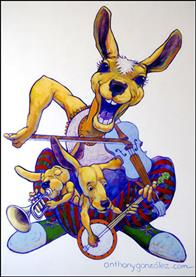

The word kangaroo also starts with the cursive lowercase letter that begins with an undercurve stroke. Let’s look at how the cursive lowercase letter k is formed.
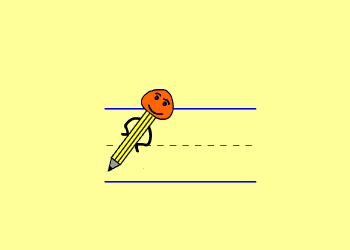
Now, you are going to practice writing the cursive
letter “k” and join it to other letters.
Click on the Unit Resource icon to the left of your screen to practice
the Cursive Letter “k”.
